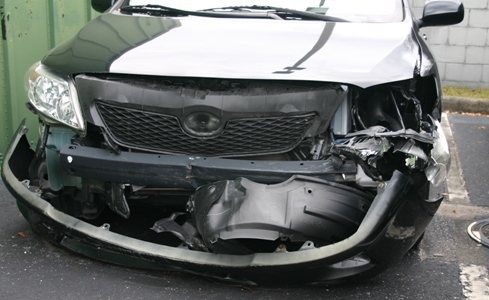January 14, 2012
Public Service
2 Comments
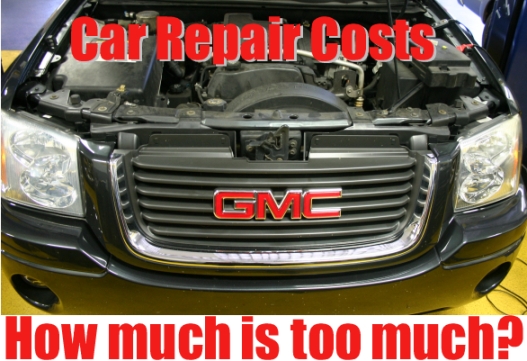
© DenLorsTools.com Summary: Article written based on what I’ve learned as a Master Auto Tech for over 25 years regarding shop rates and repair costs. I’m often asked how much a particular repair job should cost because people are worried about being taken advantage of. I have some tips to avoid being ripped off and for choosing the right repair shop that you can trust. After reading this article check out my other space at Wise Auto Tool Blog.
Read the rest…
July 13, 2011
Don Schumacher, Mechanics Tools
No Comments

DenLors Tools’ DSR PSJ2200 Series Jump Starter has a built in voltmeter for checking alternator output.
©DenLorsTools.com Summary: Hello, in case you’re not a regular reader of our car repair blog, I’m Dennis Bandy. The picture above is my jump starter. A little about myself – I’m an ASE master tech for over twenty five years. I founded DenLors Tools back in 2005. We’ve sold well over a million dollars in car tools! Which jump starter do I think is best? This is one of the questions that I hear often. We cover this today on this post at DenLors Tools “car repair blog”. Read the rest…
March 10, 2011
Ford Power Stroke, Ford Problems, Mechanics Tools
No Comments
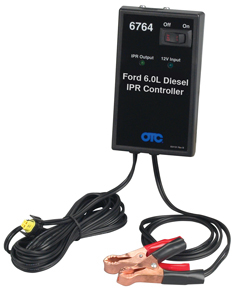
© DenLorsTools.com Summary: Specialty tools for diesels are not as easy to find as tools for cars. OTC is changing that. A recent tool introduction that will assist in checking hard starts in Ford 6.0 diesels is now available.
Read the rest…
January 22, 2011
Ford Problems, Public Service
12 Comments
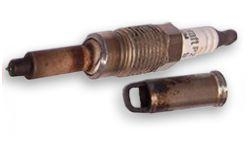
© DenLorsTools.com Summary: At this time at least one law firm is investigating a spark plug problem with certain Ford vehicles (4.6 and 5.4 3v engines) after widespread reports by owners regarding costly repairs. For several years now, DenLors Tools has been helping to inform and supply Ford owners with the tools and information needed to remove broken spark plugs in these motors. Our goal is to help our customers get their vehicles back on the road quickly and as inexpensively as possible. Some that may have found our repair articles on this subject (Ford Spark Plug Problems) too late may have fell victim to a much larger repair bill. Recently, we’ve learned of a possible class action lawsuit which may help recoup some of their losses.
Read the rest…
December 20, 2010
DIY, Engine Replacement, How To Auto Repair, Mechanics Tools
No Comments

© DenLorsTools.com Summary: Advice on changing an engine by a master tech. Changing a motor in a car is a lot of work. With some basic planning and research prior to starting the job, an engine change out will go a lot smoother.
Are You Experienced?
A motor swap is a very involved job and in most cases shouldn’t be attempted by a DIY’er. The best case scenario for someone changing an engine is for the person to first have a lot of experience doing a lot of smaller jobs. For instance if someone already has removed intakes plenty of times, they can pull from that experience when having to change the intake on the replacement engine during the motor swap. If the person has already changed alternators, water pumps, AC compressors, valve covers, timing covers, CV 1/2 shafts, motor mounts and so forth… well you get the idea. Changing a motor in a vehicle is a combination of many small jobs all put together. For a person to feel confident in taking on a large job like replacing an engine, they have to have some experience accomplishing the small jobs that play a large part in the make-up of a motor swap.
Planning Stages
Research is a key factor in successfully changing a motor out. Plan out the job by thinking about the best approach. Refer to an on-line service repair manual to see how the job is recommended. Many motors can be removed from the topside of the automobile. Some cars, particularly with front wheels drives should be removed from underneath by dropping the entire engine cradle or sub-frame. If the motor needs to be lowered from underneath the car then a vehicle lift will be necessary. If the correct equipment is not on hand for the job, you will be fighting an uphill battle. Not to say jobs “at the house” can’t be accomplished, but things are much more difficult without the convenience of all the right tools and equipment. Determine if you have the equipment and tools needed before starting the job.
Misconceptions
Some people think that ALL rear wheel drive cars are easier to do motor swaps in compared to front wheel drives. It all depends on the vehicle. Some rear wheel drive cars have harder engines to change. It all depends on access to all the bolts, positioning of the cab and the motor mount set-up. I have changed a FWD motor before by only removing ONE motor mount! It was a Ford Contour or Mercury Mystique. The mounts were all on the transmission except for the ONE front engine mount. That was a very easy front wheel drive engine to change.
Lifting Points
Before starting on the big job, figure out where the lifting points will be. Many cars have plastic intakes that should NOT be lifted on or stressed by the force of an engine lifting chain. The intake may need to be removed prior to attaching the engine chain or load leveler. Some cars will have lifting brackets already in place on the motor. Sometimes brackets can be purchased for specific models. Other times substantial bolts can be used in the engine block or sometimes the exhaust manifold studs when attaching the chain. It’s important to consider the over-all weight and if the heads are aluminum or not when deciding where to hook up the engine chain. I’ve used nylon straps before to attach to motors for pulling them. Nylon straps are much more forgiving than steel chains when up against plastic intakes and other components. Load levelers can be helpful in tilting the motor for lining it up with the transmission. The drawback to using a load leveler is that they are bulky and sometimes in the way. With that being said they really do save your back, since you can adjust the tilt with an easy adjustment instead of physically having to twist and tilt the motor with brute force!
Extra Access and Light
Remove the hood to allow for more light on the subject. Also it helps to prevent damage to the hood when going in and out with the engine crane. The hood should be placed in an out of the way area to help prevent it from being damage while the motor swap is being done. The hood sliding off the roof of the car can cause a lot damaged very quickly! By having the hood off, there will be a lot more light on the engine. Also have a good drop light and flashlight to make things go easier. One of the hardest things to do is to work an a car in a dimly lit area… frustrating and more time consuming.
Related Mechanics Tools & Auto Repair Articles
3.6 Engine Bracket
Dodge Caravan Engine Change 2001-2007 Generation 4
Auto Tools
November 13, 2010
car tools, Check Engine Light, EVAP, How To Auto Repair, Mechanics Tools
7 Comments
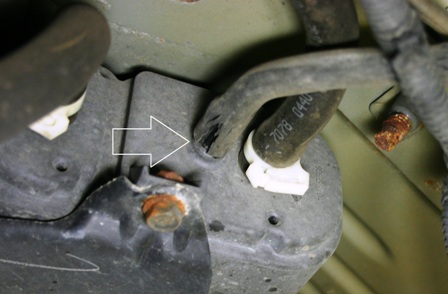
© DenLorsTools.com Summary: Car repair blog covering the most common causes of EVAP fault codes which are a major reason for Check Engine Lights to come on. Explanation of the purpose of Evaporative systems and tips on what to look for when trouble shooting EVAP fault codes. With a code reader or scan tool, many times the cause of a car’s EVAP code can be diagnosed without additional car mechanic’s specialty tools. Learn which faults are simple fixes and when help from a car repair manual or a dealer tech on-line may be needed. Related car tool blog linked for “EVAP smoke machine use” when leaks are hard to find. Read the rest…
October 24, 2010
Chevrolet, Mechanics Tools, TPM Tire Press.
7 Comments
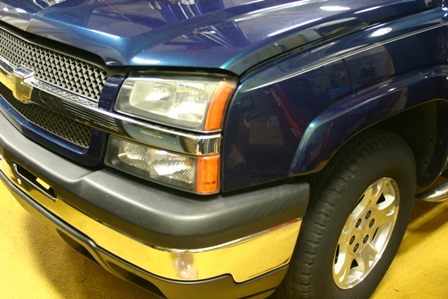
© DenLorsTools.com Summary: How to enter the relearn mode and reset the tire pressure monitoring system on a 2006 Chevrolet Avalanche. The repair blog covers a common GM TPM (Tire Pressure Monitoring) system that uses direct pressure readings which displays on the dash. Lower cost alternatives to the Kent Moore J-46079 factory tool are available and shown in the tool repair article. A less expensive tool that can be used to reset GM TPM systems is the TIPS Reset Tool. Questions as to why tire pressure sensors fail to begin with. Read the rest…
September 25, 2010
Dodge Caravan, Engine Replacement, How To Auto Repair, Mechanics Tools
8 Comments

2.4 Liter (EDZ I4) engine removal suggestions save time compared to book instructions.
© DenLorsTools.com Summary: Removal instructions in the repair manual says to remove engine and transmission along with cradle from the bottom of the van. This engine can be removed from the top leaving the cradle, transmission and CV 1/2 shafts in place saving many hours of labor time! Included is a “stop motion” video showing removal and replacement – a time lapse showing in a couple of minutes the job that took 6 hours (book time is 13.9 hours). Applicable vehicles; 2001, 2002, 2003, 2004, 2005 2006 & 2007 Dodge Caravan and Town & Country mini vans w/2.4 4cyl.
Read the rest…
October 31, 2009
How To Auto Repair, Mechanics Tools
8 Comments

© DenLorsTools.com Summary: This article is on how to check for bent valves. Valves get bent most often on vehicles that have had a timing belt break or a timing chain jump a sprocket. Interference engines can allow the valves to crash into the pistons when the timing belt breaks due to the engine’s timing being out of synchronization. Some cars are more prone to having valve damage when the timing is off. We cover some of the more common manufacturers that seem to suffer from bent valves more than others, from timing belt failure. We have some tips on how to check for bent valves with the cylinder head still on the vehicle. Tools that help in determining if there’s bent valves listed also.
Read the rest…



